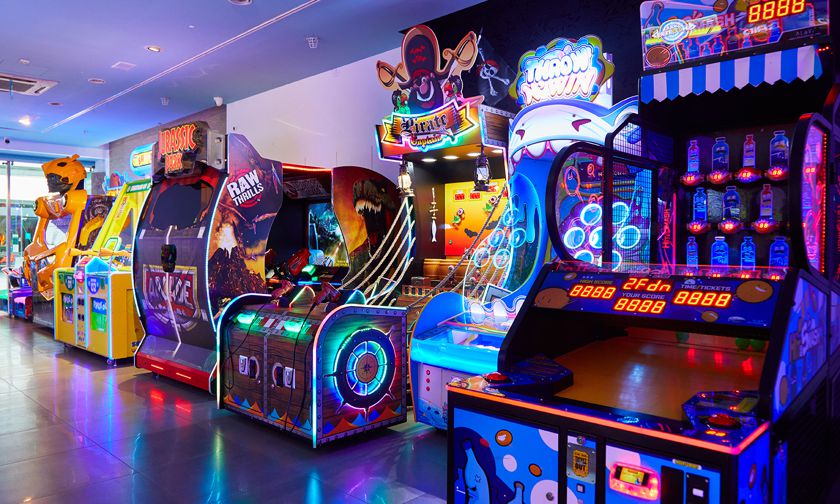
Arcade games are more than just machines with glowing screens and clinking coins. They’re time capsules of childhood adventures, tokens of teenage rebellion, and reminders of the pure joy of gaming without the need for flashy storylines or photorealistic graphics. For millions, these games are a gateway to simpler times, yet they’ve also proven to be timeless titans in a gaming world that’s constantly evolving.
The Golden Age of Arcade Games
Remember those days when malls and small roadside convenience stores buzzed with the unmistakable symphony of 8-bit tunes? The birth of arcade games in the late 1970s and 80s marked the dawn of a cultural revolution. Titles like Pac-Man, Galaga, and Space Invaders weren’t just games; they were sensations. The simplicity of the gameplay was its genius, and the glowing screens lured players into colorful worlds they couldn’t experience anywhere else at the time.
One iconic image locked forever in this era is that of young gamers huddled over a joystick, faces illuminated by the neon glow. They weren’t just playing; they were competing. They scrawled their three-letter initials into high-score screens, battling to immortalize their victories. Challenge and camaraderie flowed in equal measure, as strangers became allies or rivals, united by the hypnotic allure of the arcade.
The golden age of arcade gaming wasn’t just about games; it was about connection. Whether you were chasing ghosts in Pac-Man or hopping barrels to rescue Princess Pauline in Donkey Kong, arcades fostered a special kind of community.
Following the Pixels Into the Future
Like any cultural phenomenon, arcade games didn’t stay static. The rise of home consoles in the 1990s may have signaled a shift in where gaming took place, but arcades kept their pulse alive. They evolved, leaning into cutting-edge technology like motion sensors, light guns, and dance mats. Titles like Dance Dance Revolution and Time Crisis brought something new to the table, experiences that couldn’t easily be replicated on home systems.
Interestingly, arcade games continued to inspire entire genres—think fighting games like Street Fighter or Mortal Kombat, both birthed from the chaos of the arcade floor. Even the storytelling titans of modern gaming owe a nod to the creativity sparked in those early cabinets.
By the late 90s and early 2000s, however, arcades began to wane in popularity, overtaken by at-home setups that boasted convenience and affordability. Games could be played without the jangling pockets full of quarters. Still, arcade games weren’t down for the count.
Nostalgia Meets Modernity
Fast-forward to today, and arcade games are experiencing an unexpected revival. Why? Nostalgia plays a big role. Adults who grew up with these games crave the return of that visceral joy. Craft breweries, cafes, and retro-themed bars now feature fully functioning arcade cabinets, transporting people back to the days when the biggest concern was “Can I beat my high score?”
Modern arcades haven’t just stopped at nostalgia; they’ve adapted to modern culture. Places like Japan’s Akihabara and boutique “barcades” in big cities blend retro classics with newer, immersive experiences. Virtual reality (VR) has found its way into arcade spaces, letting gamers step into worlds that feel unbelievably real.
Additionally, platforms like mobile gaming and online stores have made classic arcade games more accessible than ever. Whether you’re playing Frogger on your smartphone or rediscovering Ms. Pac-Man on a console emulator, arcade games remain a fixture in gaming culture. They’ve moved seamlessly from physical cabinets to every digital device imaginable.
The Secret Sauce of Arcade Games’ Timeless Appeal
But why do arcade games hold up? What keeps people coming back decades later? For one, their mechanics are deceptively simple. You know the drill within moments, yet mastery still feels just out of reach. Games like Tetris or Asteroids may not involve dialogue trees or 4K explosions, but their challenge is eternal. It’s gaming in its purest form.
They also speak to our love for tangible experiences. There’s just something satisfying about the click of a joystick or the rhythmic bashing of brightly colored buttons. Add that to the sounds of coins dropping and the brief fanfare when you reach the next level, and it’s a full-sensory experience.
Then there’s the social aspect. Back in their heyday, arcade games were a communal experience, and that hasn’t changed. Whether it’s competing for a high score in Galaga or facing off in a Tekken tournament, these games bring strangers together like few others can.
Fun Facts About Arcade Games
- The original Pac-Man was inspired by pizza. Its creator, Toru Iwatani, came up with the design after seeing a pizza missing a slice.
- The world’s largest arcade, “Galloping Ghost Arcade,” located in Illinois, holds over 850 games under one roof!
- Space Invaders was so popular in Japan that it allegedly caused a nationwide shortage of 100-yen coins when it first launched.
Press Start to Play
Arcade games are living proof that fun doesn’t fade with time. Whether it’s a well-worn joystick on a 1980s cabinet or a sleek VR headset offering a futuristic experience, arcade games have carved out a timeless corner of our hearts.
With each high score achieved and every coin dropped into a machine, arcade games remind us that great gaming isn’t about realism or enormous budgets. It’s about creating experiences that stick with us, ones that encourage us to laugh, compete, and strive.
New York Style Pizza Near Me Next time you see an arcade cabinet bathed in the warm glow of nostalgia, don’t just walk past it. Take out a coin, press start, and lose yourself in the magic of arcade games once more. After all, some thrills are meant to be forever.


